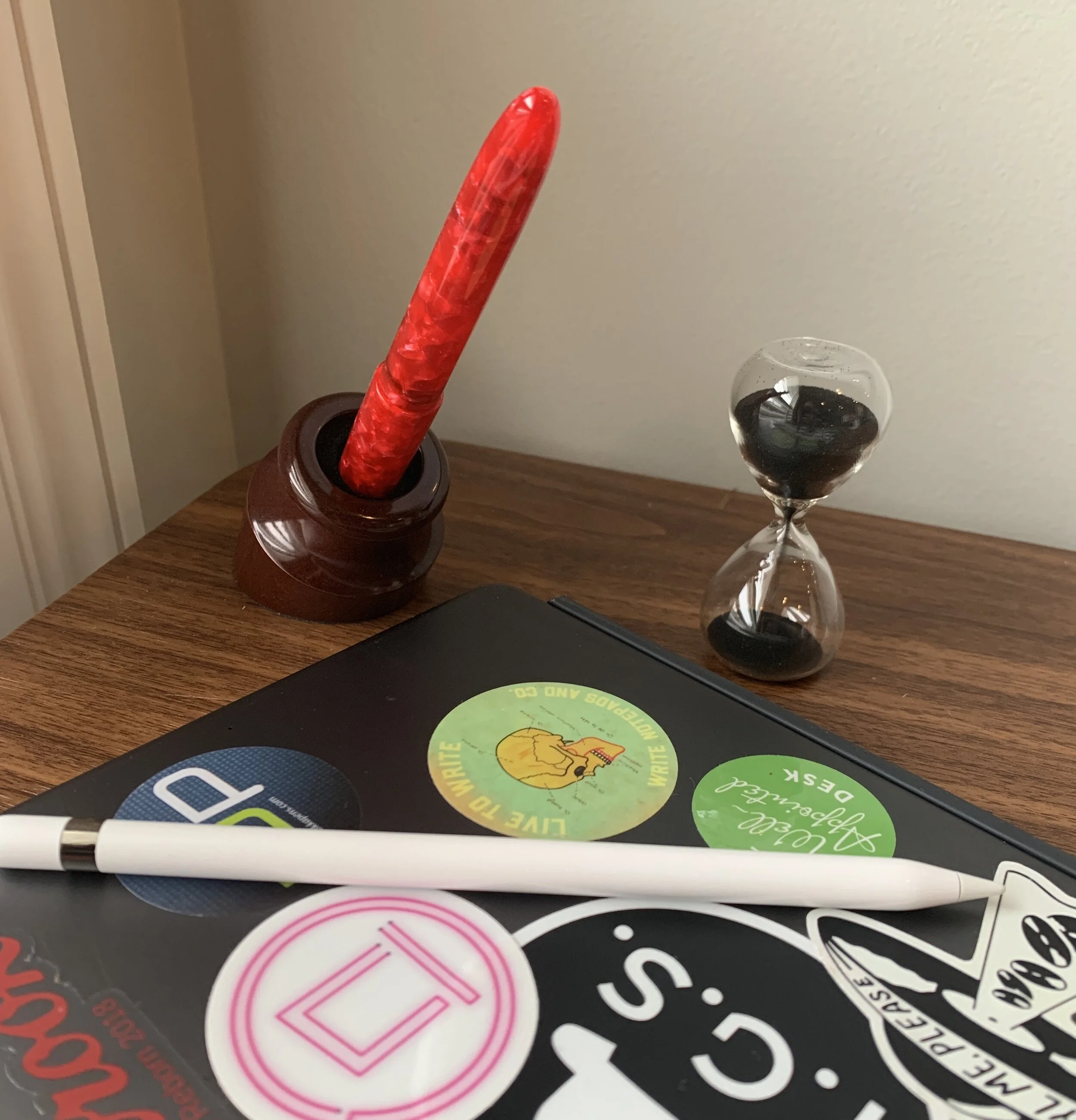T.G.S. readers don’t just accumulate their stationery, they use it, so it doesn’t surprise me that one of the more in-demand product categories for reviews is quite practical: The highlighter marker. It’s somewhat difficult to find quality highlighters in the U.S. market. Those available at big-box stores tend to have oversized chisel-tip points, with ink that can pool on the page and bleed through most paper.
I’ve experimented with many different highlighting and annotation techniques over the years, ranging from avoiding highlighters entirely by underlining with colored pencils or gel pens, to using refillable Platinum Preppy markers with specialty “highlighter inks”, to highlighter pencils designed to work on even the thinnest onionskin or Bible paper. I’ve also discovered a subset of specialized stationery: Dual-tone highlighter markers that allow for color-coding and precise annotation.
Five different colors over ballpoint ink, which does not smear at all. I appreciate that these are dry-ish liquid highlighters.
The specific highlighter markers pictured here are the Kokuyo Mark+ Dual Tone Highlighters, which are notable for their distinctive double tip. While each marker has a specific color (purple, yellow, pink, green, blue, or grey), there are technically two different options in each highlighter: a darker shade and lighter shade of the same color. The dual-tone tip allows for a lot of versatility, as you can easily delineate between important ideas and very important ideas, or you can use the darker color to highlight headers, main concepts, etc., while using the lighter colors to call out quotes and longer passages. The ink is very easy on the eyes, as the muted colors are less eye-searing than other ultra-bright fluorescent highlighters.
The five colors included in the standard 5-pack. All of these are available for purchase individually, along with a grey color that’s not included in the assortment.
Some have commented on one potential drawback to the Mark+ Highlighters: the relatively narrow chisel tip is set at a precise angle and you have to be somewhat careful to ensure a clean line. For me personally, that’s more a feature than a bug: not only do I enjoy the narrower tip (perfect for highlighting small-print legal documents), but without some friction in the process, I tend to go “highlighter happy” when I’m reading. If I’m not mindful of what I’m highlighting, I can end up with large portions of highlighted text that defeat the purpose of a highlighter, which for me is to allow you to easily jump to the most important takeaways and ideas. This added friction is also why I love highlighter pencils and leadholders - the fact that I have to sharpen them periodically forces me to focus by using the highlighter more sparingly on only big-picture concepts.
The yellow highlighter over a few different writing samples, from top: (1) Ballpoint pen ink with zero smearing; (2) Caran d’Ache HB pencil lead with zero smearing; (3) Ohto Gel ink with moderate smearing (to be expected); (4) Uni HB Mechanical Pencil lead with zero smearing; (5) Schmidt .7mm Rollerball Refill with fairly significant smearing (also to be expected - hardly anything highlights rollerball ink with out smearing); and (6) Platinum black fountain pen ink without any smearing at all, which surprised me the most. I’ve not had any issue with these highlighters smearing inkjet or laser printer ink.
Takeaways and Where to Buy
The Kokuyo Mark+ is an excellent highlighter for those who require additional versatility in how they annotate, and who regularly work with smaller text that requires a more precise tip. It’s still a liquid ink highlighter marker, and your mileage will vary in terms of how these function on specific types of paper, but overall I’ve had a very good experience using these markers on cheap copy paper and even thinner book papers. As you can see above, they work well for highlighting handwriting in most ink formats, and even where there is some smearing with smudgy inks, the writing remains legible.
In addition to our range of highlighter pencils, I’ve decided to offer these specific highlighter markers for purchase in our own shop. You can buy specific colors individually, or purchase a pack of five.
The 5-Pack of the Mark+ Highlighters come with a convenient resealable pouch that has held up well over the nearly two years I’ve owned these.
The Gentleman Stationer is supported by purchases from the T.G.S. Curated Shop and pledges via the T.G.S. Patreon Program.
